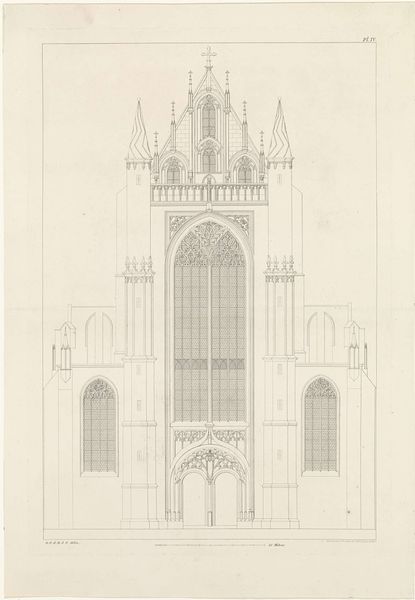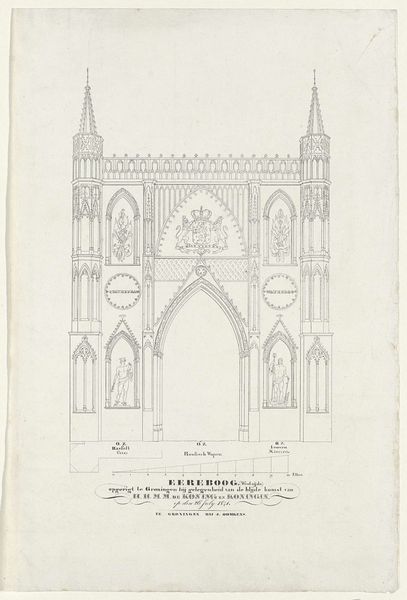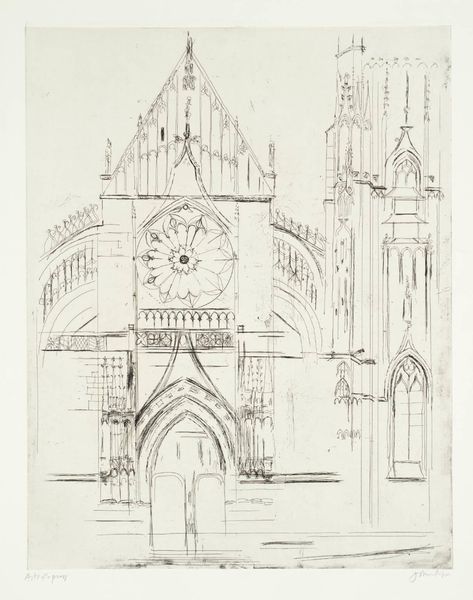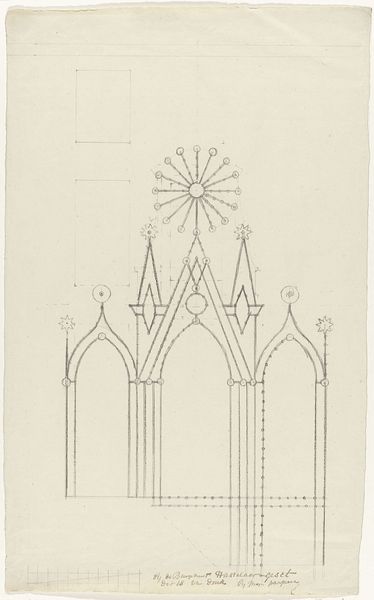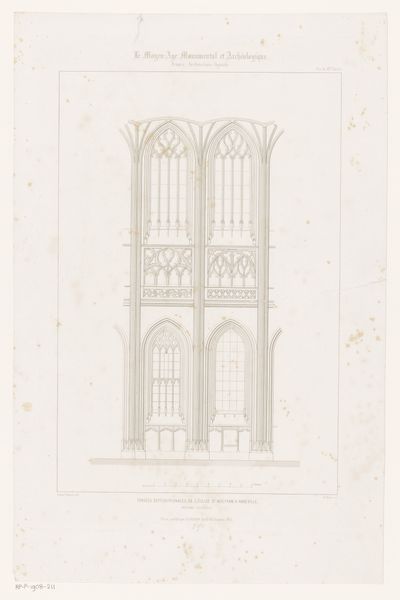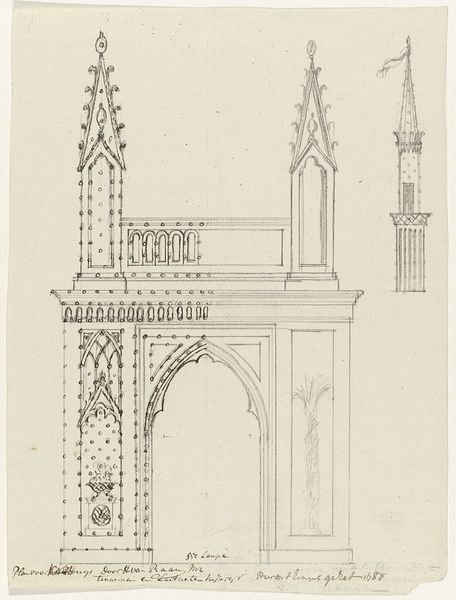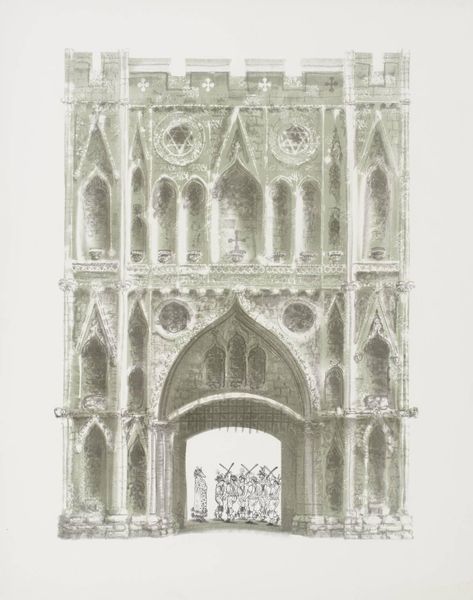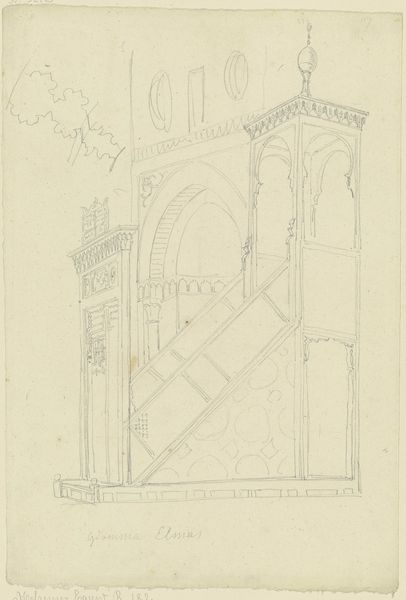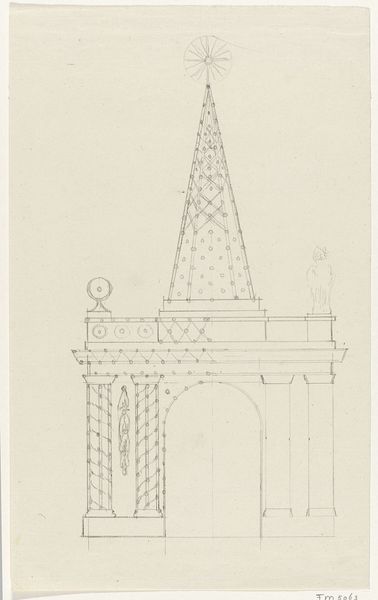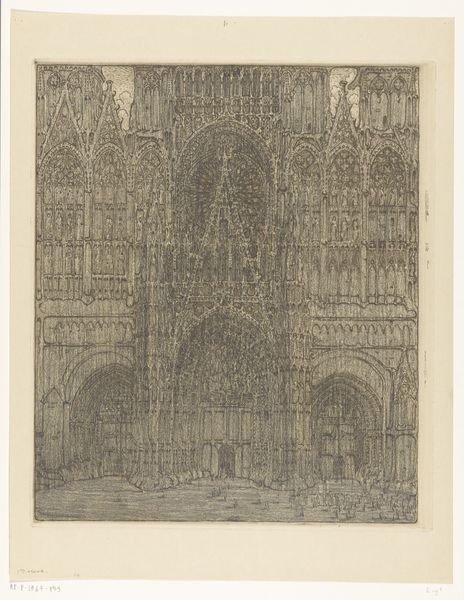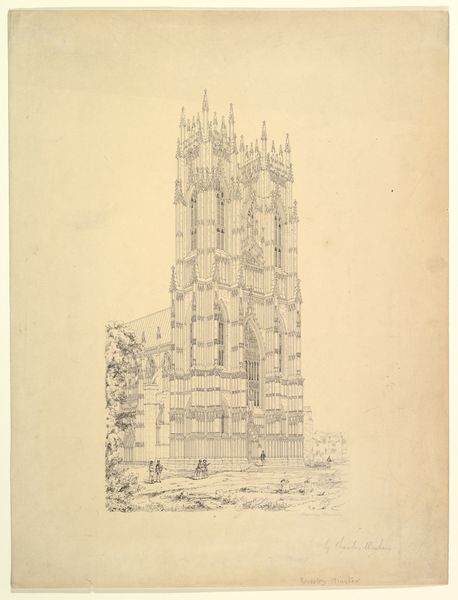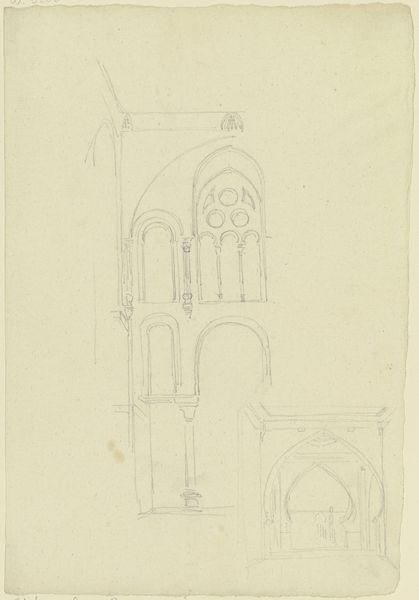
Ereboog opgericht bij het bezoek van de koning en koningin aan Groningen, 1841 1841
0:00
0:00
#
aged paper
#
quirky sketch
#
old engraving style
#
personal sketchbook
#
historical fashion
#
idea generation sketch
#
sketchwork
#
old-timey
#
sketchbook drawing
#
storyboard and sketchbook work
Dimensions: height 340 mm, width 230 mm
Copyright: Rijks Museum: Open Domain
Editor: This is "Ereboog opgericht bij het bezoek van de koning en koningin aan Groningen, 1841" by Jan Oomkens. It’s from 1841 and is currently held at the Rijksmuseum. It appears to be a preparatory drawing or engraving design. I’m struck by its almost obsessive level of architectural detail...it feels very formal. What do you make of it? Curator: Indeed. Looking at this elaborate archway design, we can ask ourselves what such a structure represents in its historical context. Think about power dynamics at play during royal visits in the 19th century. How does architecture function as a tool to both celebrate and subtly reinforce the authority of the monarchy? What statement is made when royal visits are accompanied by temporary architectures like this? Editor: That’s fascinating. I hadn’t considered it beyond mere celebration. So, you’re suggesting the arch isn’t just decorative, but actively participates in reinforcing a social order? Curator: Precisely. Consider the symbolism embedded within the arch - the heraldry, the carefully planned vistas. These weren't accidental choices. Every detail, from the height of the arch to the placement of national emblems, contributed to a carefully constructed message about the relationship between the monarchy and the citizens of Groningen. Why design a *temporary* architecture instead of improving infrastructure for citizens? Who benefits, and who is othered? Editor: I see it now! The impermanence almost emphasizes that the power structure is timeless and doesn’t need a *permanent* marker. Like, the kingdom is already here; it doesn't need a stone monument. Curator: Exactly! The design speaks volumes about 19th-century Dutch society and how carefully public image and power were intertwined, then and now. This invites reflection on how contemporary political performances also rely on similar techniques of spatial control and visual symbolism. Editor: Thanks so much! I never would have considered that without your insights. I’ll definitely view similar pieces through a different lens going forward.
Comments
No comments
Be the first to comment and join the conversation on the ultimate creative platform.
